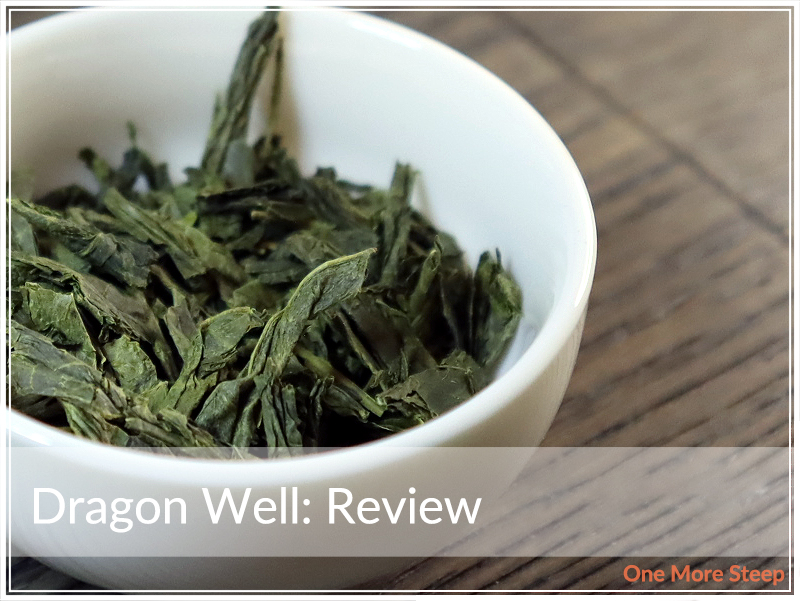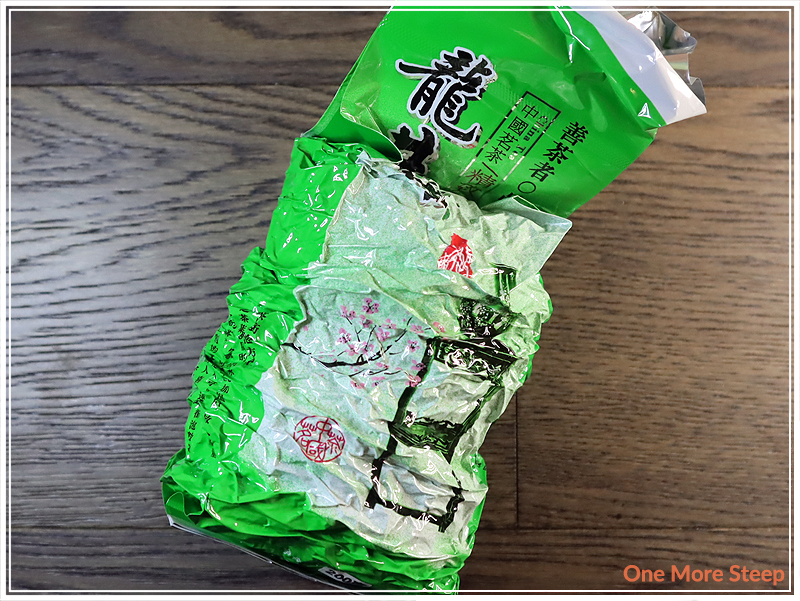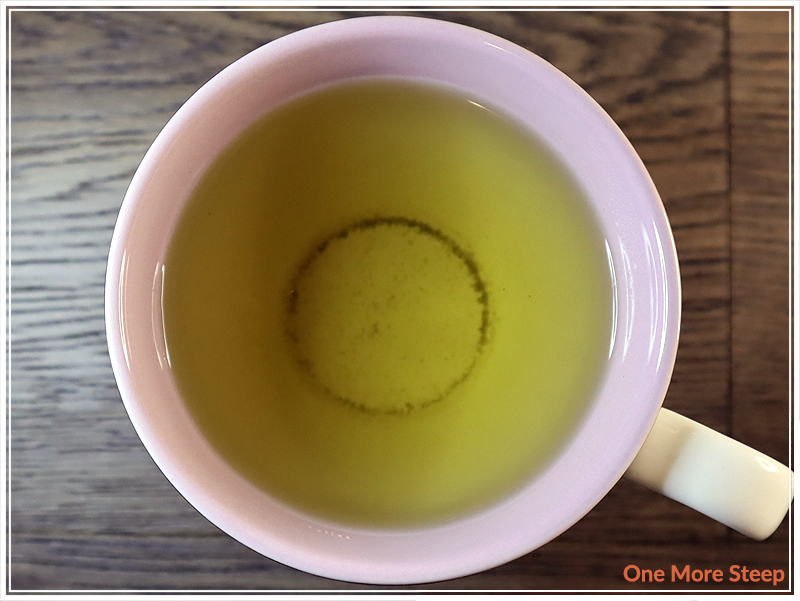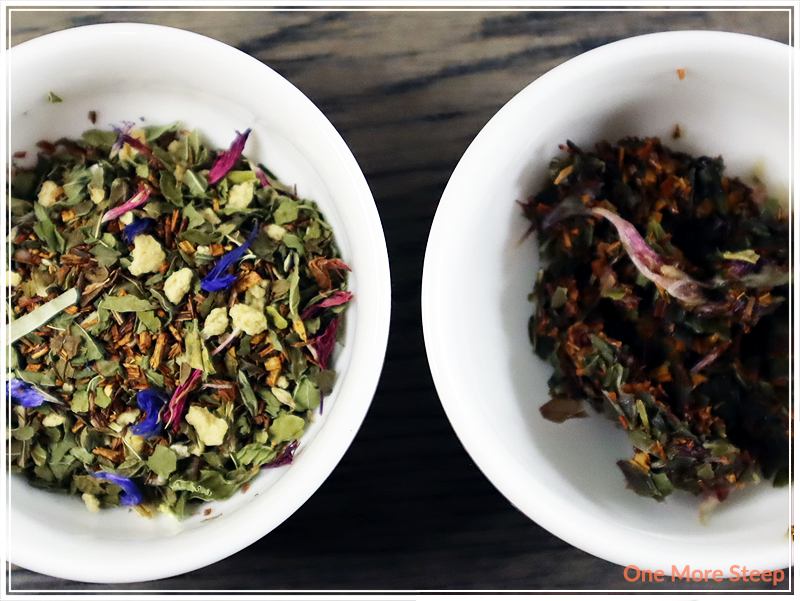Dragon Well by DMDQ
Green Tea / Straight
$7.27 for 200g

First Impressions
Another week, another impulse grocery store tea aisle purchase!
DMDQ’s Dragon Well came in a cardstock carton that’s taped closed. Inside, is a vacuum sealed foil package of 200g of tea. The foil packet itself is tightly bunched up, because of the sealing method. Dragon Well comes from China, but there’s little other information on the packaging in regards to where specifically.

That said, Dragon Well is a classic Chinese green tea. I’ve reviewed multiple dragonwell teas before (it’s also known as Long Jing), and I really bought this because it was a great deal in terms of dollar per gram (3.6¢ per gram) and wanted to know if it would be a potential tea cupboard staple because I really enjoy drinking dragonwell, but also like saving money if I can. The leaves themselves are flat, long-ish. I found that a lot of leaves aren’t full pieces, I found a lot of broken leaf pieces in the spoonful that I got out of the packet. The colour is green, a mix of mid to dark greens with a dusty texture to the leaves. It does have a grassy smell that I’ve come to anticipate when it comes to Chinese green teas, so it does have the right aroma.

Preparation
I couldn’t find steeping instructions on the packaging, at least not in English or anything that the Google Translate identified as being steeping instructions.
That said, I opted to use the green tea setting on my kettle (175°F/80°C) and did an initial steep of Dragon Well for 2 minutes. If you’re ever in a similar situation, you can check out my chart of tea steeping times and temperatures for a general steeping guide.

First Taste
Dragon Well steeps to a green-yellow colour, and I found that there was a lot of dust that settled at the bottom of my tea cup. I wasn’t surprised, given at how dusty the tea leaves were before I had began to steep the Dragon Well. The aroma of the leaves is grassy, and just slightly sweet. I found the flavour of the Dragon Well to be sweet, grassy, and there’s a mild amount of umami in the background. There was no bitterness or astringency with the initial steep of 2 minutes.

A Second Cup?
I resteeped Dragon Well twice, adding an additional 30 seconds to each subsequent steep. I found that the flavour stayed consistent and was just a bit weaker. The leaves themselves are, unsurprisingly, pieces of leaves rather than full leaves as I’m used to seeing in other long jing teas.

My Overall Impression

I liked DMDQ’s Dragon Well. I was mildly impressed at the flavour that these leaves were able to produce in my cup of tea. I had hoped that the tea would be a higher quality, but given the price I’m not terribly disappointed. That said, if you prefer a tea with less dust, then this isn’t the one for you. But as a lower priced Dragon Well, it certainly fits the bill for a green tea that I won’t mind sharing a lot or steeping large pitchers to have iced this summer.
Curious about the cup rating system? Click here to learn more.










